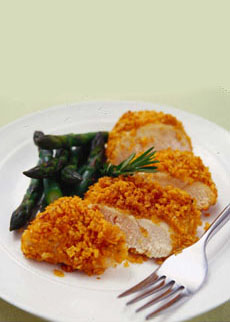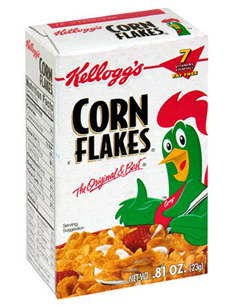RECIPE: Oven Fried Chicken With Corn Flakes
|
July 6th is National Fried Chicken Day. Our favorite fried chicken recipe is breaded with Corn Flakes. We usually make this skillet fried chicken recipe, but here’s a “bake fry” recipe.
Of course, it’s breaded with Corn Flakes crumbs. Not only is the texture superior to flour, but the corn flakes add a delightful flavor note. (Panko, Japanese bread crumbs, provide the texture but not the flavor.) You can make this recipe with or without the chicken skin. We remove it to cut back on cholesterol. Ingredients |
||
|
Preparation
1. CRUSH. Crush corn flakes in a plastic bag with a rolling pin or wine bottle. Place crushed cereal in a shallow dish or pan. Set aside. 2. MIX. In medium mixing bowl, beat egg and milk slightly. Add flour, salt and pepper. Mix until smooth. Dip chicken in batter. Coat with cereal. Place in single layer, in shallow baking pan coated with cooking spray or foil lined. Drizzle with margarine. 3. Bake at 350° F about 1 hour or until chicken is tender, no longer pink and juices run clear. For food safety, internal temperature of the chicken should reach at least 165ºF. Do not cover pan or turn chicken while baking. Serve hot. |
||

